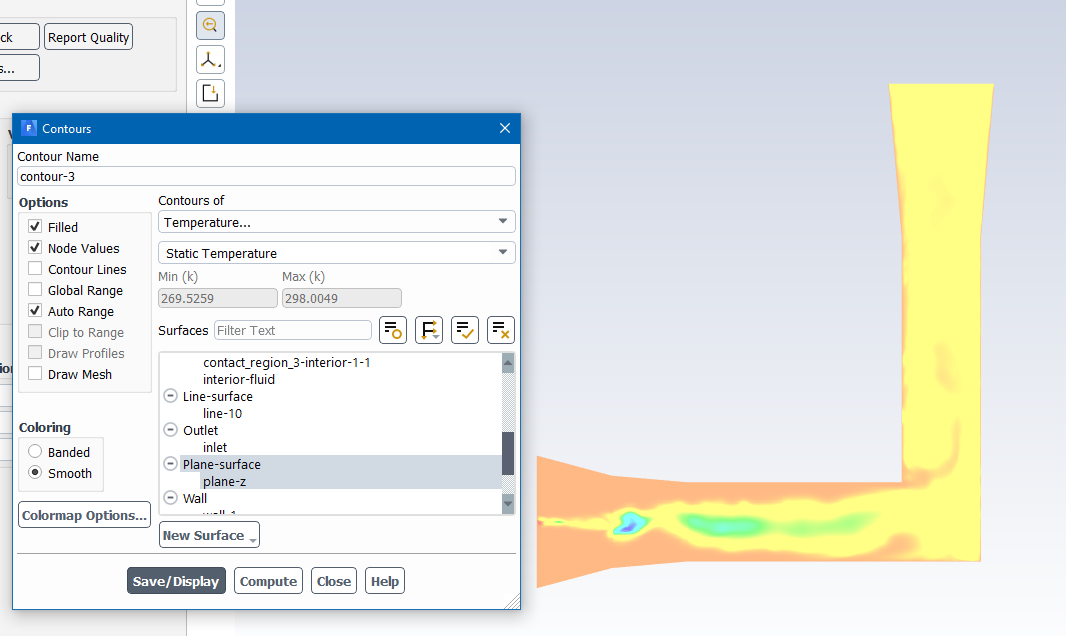TAGGED: cfd, simulation, species
-
-
April 20, 2022 at 3:59 pm
TSADEGHI
SubscriberHello,
I am using the species model and defined 50% relative humidity (Mass fraction of h2o is 0.00879) in my model. Temperature is constant at the inlet, outlet, and walls. I defined the inlet as a pressure outlet and also defined the outlet as a velocity inlet. The result that I am getting shows relative humidity of 1200% and even more in finer meshes.
Now my questions are :
1- Am I doing something wrong?
2- both inlet and outlet are open, so air is coming into my geometry from the inlet (because of velocity inlet) and exiting through the outlet with a relative humidity of 50%. However, I think since I am defining a Mass fraction of h2o of 0.00879 at the outlet, I am forcing the simulation to reach this level of humidity which is not what I am looking for.
3- Is there any way to define the RH as 50% for the inlet velocity and let the system calculate it to the outlet?
April 20, 2022 at 4:13 pmRob
Forum ModeratorSet the inlet mass fraction to give 50% at inlet conditions, the solver will then calculate the RH over the domain. You can't set RH on a boundary (unfortunately as we have asked). If regions are hitting 1200% check the temperature field, is it sensible?
April 20, 2022 at 4:18 pmApril 20, 2022 at 4:39 pmRob
Forum ModeratorSet the outlet too if you have reverse flow. I don't like the way you suddenly get a cold spot in the domain. What's happening with the flow?
April 20, 2022 at 4:53 pmTSADEGHI
SubscriberWell, this means my current model is correct? cause I already have defined the H2O mass fraction as the same in both inlet and outlet. The cold spot is probably because of spray injection. I am using DPM to inject water liquid droplets inside my geometry.
So what is the reason for having 1200% (or more ) of RH?
I defined the outlet as a velocity inlet to act like a vacuum pump (velocity has a negative value). Do you think I can define the inlet as a velocity inlet and make the outlet as pressure far-field?
April 21, 2022 at 10:47 amRob
Forum ModeratorYou need to set flow at one end or the other, so either velocity inlet or outlet, don't use both. If you're then spraying droplets into the system as these drop the temperature or evaporate you may get some non-physical RH values. You'd need phase mass transfer to condense material, that may not be worth the effort depending on what you're trying to find out.
Viewing 5 reply threads- The topic ‘How to define boundaries when simulating relative humidity?’ is closed to new replies.
Innovation SpaceTrending discussions- Varying Bond model parameters to mimic soil particle cohesion/stiction
- JACOBI Convergence Issue in ANSYS AQWA
- affinity not set
- Resuming SAG Mill Simulation with New Particle Batch in Rocky
- Continuing SAG Mill Simulation with New Particle Batch in Rocky
- Is it able to solve turbomachinery using density-based solver in Fluent?
- Two-way FSI simulation
- Ensight Force_per_unit area_EV
- Question about generating Porous Jumps
- The result in FLUENT differs from CFD Post
Top Contributors-
4562
-
1494
-
1386
-
1209
-
1021
Top Rated Tags© 2025 Copyright ANSYS, Inc. All rights reserved.
Ansys does not support the usage of unauthorized Ansys software. Please visit www.ansys.com to obtain an official distribution.
-












